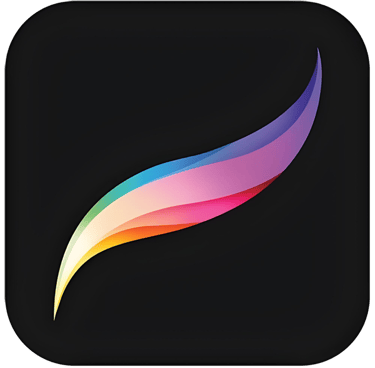The Complete Guide to Tote Bags: Types, Uses, and Customization Techniques
Discover everything you need to know about tote bags—from material types and practical uses to step-by-step customization methods. This in-depth guide includes data-backed insights and creative tips to help you design high-quality, personalized tote bags for everyday use, gifts, or branding.
Edward
8/10/20253 min read


Understanding Tote Bags: Types and Uses
Tote bags have witnessed a significant surge in popularity, driven by the global shift towards sustainability and the rise of personalized fashion. According to a 2023 report by Grand View Research, the global reusable bag market size was valued at over USD 10.5 billion, with tote bags accounting for a substantial portion due to their adaptability, reusability, and growing demand in promotional merchandise.
Types of Tote Bags and Their Common Uses
Tote bags are available in various styles, fabrics, and sizes, serving a wide range of functions from shopping and travel to fashion and branding.
Common Materials
Cotton: Known for its biodegradability and softness, cotton tote bags are among the most eco-friendly options. A report from Textile Exchange highlights that organic cotton reduces water usage by 91% compared to conventional cotton.
Canvas: A sturdier form of cotton, canvas is highly durable and capable of carrying heavier loads—ideal for books, groceries, or tools.
Polyester: Though synthetic, polyester totes offer water resistance and durability, making them perfect for outdoor activities or gym use. Recycled polyester (rPET) options are now available, helping reduce plastic waste.
Size Variations
Standard Size (14–16 inches wide): Great for daily errands, work, or school.
Large Totes: Ideal for beach trips or travel, accommodating bulkier items like towels or clothes.
Mini Totes: Serve as fashionable accessories or lunch carriers.
Grocery/Market Totes: Often designed with reinforced bottoms and wide gussets for carrying produce and bulk items, supporting sustainability by reducing plastic bag use.
A Nielsen study revealed that 72% of consumers prefer brands that offer sustainable packaging or bags—making reusable tote bags not just practical but also a smart branding opportunity.
Necessary Materials and Tools for Customization
Creating a customized tote bag requires careful selection of materials and tools that align with your design goals.
Fabric Choices
Cotton Canvas & Denim: Excellent for everyday use and hold color well during decoration.
Polyester Blends: Lightweight and cost-effective; often chosen for promotional events.
Sustainable Options: Recycled cotton or rPET fabrics are increasingly popular among eco-conscious brands and consumers.
Decoration Supplies
Fabric Paints: Non-toxic acrylic paints are ideal for bold, hand-drawn customization.
Markers & Dyes: Useful for intricate line work and vibrant patterns.
Add-ons: Embroidery threads, fabric patches, pins, and iron-on vinyls can enhance uniqueness.
According to Etsy’s 2024 Craft Report, hand-decorated tote bags rank among the top 10 best-selling DIY gift items, making the customization process not just creative but potentially profitable.
Essential Tools
Sewing Machine or Hand-Stitching Tools
Scissors, Fabric Glue, Measuring Tape
Stencils, Transfer Paper, Iron
These tools are readily available at local craft stores or online platforms like Amazon, Joann, and Michaels.
Designing Your Custom Tote Bag: Tips and Techniques
Designing a tote bag combines functionality with self-expression. Here are three popular techniques:
1. Screen Printing
Best for: High-volume runs, logos, bold text.
Stat: Screen printing accounts for over 58% of decorated apparel market share, indicating its reliability and scalability.
Pro Tip: Use water-based inks for eco-friendliness and softer prints.
2. Embroidery
Best for: Detailed monograms or brand logos.
Durability: Embroidered designs tend to outlast printed ones, especially through repeated washing.
Pro Tip: Contrast your thread color with the base fabric for optimal visibility.
3. Appliqué
Best for: Layered, artistic designs using mixed fabrics.
Creative Advantage: Offers texture and a 3D look.
Pro Tip: Use heat-bond backing to secure fabric layers before stitching.
When designing, consider your target audience and usage scenario. For instance, a promotional tote should prominently display brand identity, while a personal gift may include names, quotes, or themed artwork.
Step-by-Step Guide to Assembling Your Tote Bag
Step 1: Prepare Materials
Fabric Size: Two pieces, each 15” x 16”.
Handle Strips: Two pieces, each 2” x 22”.
Extras: Patches, decals, thread, etc.
Step 2: Cut and Decorate
Use fabric scissors for clean cuts.
Apply designs (screen prints, iron-ons) before stitching.
Let the fabric fully dry/cool to avoid smudging or peeling.
Step 3: Sew the Main Body
Stitch the sides and bottom together using a ¼” seam.
Reinforce corners for better shape retention.
Step 4: Add Handles
Align and pin handles 3 inches from the side seams.
Use a square or cross stitch for added strength.
Step 5: Finish the Top Hem
Fold over the top edge twice (½” folds) and stitch to prevent fraying.
Troubleshooting Tips
Uneven seams: Use clips instead of pins for stability.
Machine skipping stitches: Re-thread your machine or use a thicker needle.
Design peeling: Re-press with an iron or use stronger transfer material.
By following these steps, even beginners can create high-quality, long-lasting tote bags with professional finishes. This not only encourages sustainability but also fosters creativity and personalization.
Tote bags are far more than just convenient carriers—they are customizable, sustainable, and stylish canvases for both personal expression and brand promotion. Whether you're designing one as a creative hobby or producing them for resale, understanding their types, uses, and crafting techniques will help you make informed choices.
With the right materials, a touch of creativity, and basic tools, anyone can bring a functional and fashionable tote to life—one stitch at a time.
Partners
Supporting creators with quality production and delivery.
Collaboration
About Us
Copyright © 2025 Raoin Co. All rights reserved.







